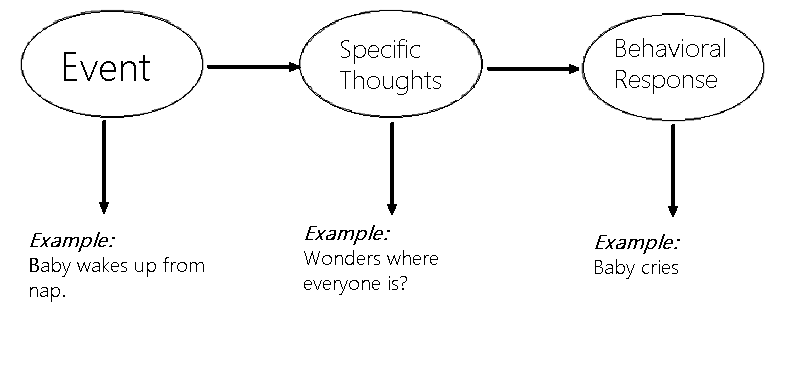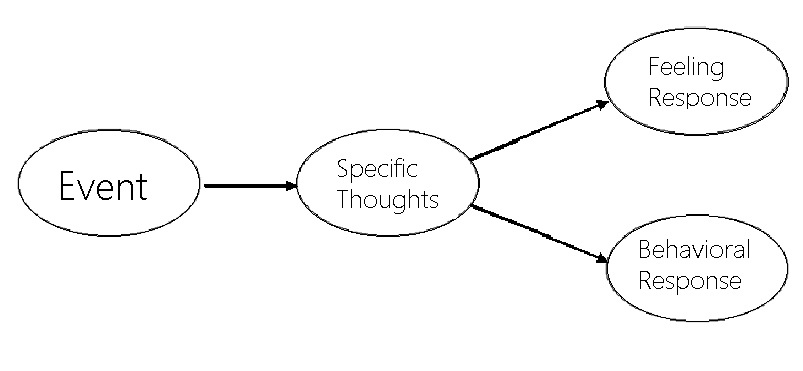
To navigate the world it is important to have up-to-date information. Without knowing which way to go, it is possible that you will end up in the wrong place, at the wrong time, to do the wrong thing.
Years ago, I moved from Central Wisconsin to the Minneapolis, MN, area. I did not have a GPS or smart phone to show me where things were, so I spent time driving aimlessly and eventually learned how to get around without the need of a map, MapQuest or Google Maps.
Today, many people use GPS on a regular basis, rather than printed directions from MapQuest or Google Maps, or simply learn to navigate their way around by repetition.
The way we think is similar to using GPS or printed directions from the internet. We call these collections of thoughts, feelings and behaviors a Thought Map. A Thought Map is a set of instructions used to tell us where to go or not go, how to do something (including being silent), the five senses (sight, hearing, taste, touch and smell), intuition and a set of instructions needed to control impulses. We use Thought Maps every day for many different purposes. For example:
- Choose which food to eat
- How we should react to other drivers
- When/how to speak our opinions (with or without a “filter”)
How Are Thought Maps Formed?
Thoughts maps are created early in development, I would argue that they are formed in-utero, while others argue that they do not form until after birth and we have begun interacting in the world. As we grow, we learn to recognize the world around us. As thought maps are formed, instructions are written virtually for each event and stored for later to be accessed (used) when faced with an event, or similar event, in the future.
A simple thought map looks like this:
Event: Baby wakes up from nap
⇒ Thought: I am hungry; I want comfort; “Where is everyone?”
⇒ Action: Cries
In response to the child crying, its’ parent (mom, dad or caretaker) has a thought map activated:
Event: Baby is crying
⇒ Thought: Child is hungry; child needs comforted; child’s diaper is full
⇒ Action: Attends to the child’s needs (bottle, holds child – comforting them; changes diaper)

Fig 1
Note that each event may kick off one or many thought maps. In the above examples, there are three potential thought maps for the child and the caretaker.
Thought maps give us directions on how to react to a situation – sometimes it is an event that we have experienced previously, while other times we creating a new thought map. More often than not, the course of events happens faster than you notice, thus we believe that the behavior occurs without thinking. You may have even assumed that the behavior was a result of the event. This, however, is not true. Take a moment to let that sink in. Behaviors NEVER occur without having a thought first.
I was introduced to Thought Maps while working in a jail setting, as I facilitated a psycho-educational group on Criminal and Addictive Thinking. Many incarcerated individuals believe that they have been thrown away by society, that no one cares about them any longer. No doubt you have felt something similar from time to time as well…alone, scared, worthless or angry. What if you could change these thoughts, feelings and ultimately the behaviors? Sound good? If so, keep reading to find out how.
Let’s think about the following scenario I picked up from the Criminal and Addictive Thinking curriculum.
You are enjoying time with friends in your apartment. The time is 11 p.m.; you’re wide-awake, in a good mood. Your music/TV is loud. There’s a knock on your door. You open the door to see someone who gives you a dirty look; it’s obvious they are not happy.
“Could you please keep it down? The music/TV is coming right through the walls, and I’m trying to sleep. I’ve got to work tomorrow.”
You think, “who are they telling me what to do in my home?” You feel the blood rush into your face and feel anger beginning to build up. You pause. Then tell him what you feel.
“Screw you. This is my place and I can do what I want to, when I want to. You think I don’t work? You’re messing with the wrong person. Get outta here!
As you speak, you puff your chest out, leaning forward. Your hands form into fists. You stare directly at them; they’ve taken a step back by this time – surprised. You wait a moment for them to let your words sink in. Then slam the door in their face and go back to your friends. Then you turn the volume up on the music/TV another notch, your good mood has been diminished. You’re upset now, and your thoughts begin spinning.
What happened in this story? Did it have to happen this way? Why did it happen in this fashion?
The details of the story aren’t important, it doesn’t matter if they normally act or react this way, as their thinking pattern is part of them. It makes up a large portion of their personal thought maps. In this case, the individual is being asked to do something that they do not want to do.
As you begin to answer these questions, ask yourself if you were able to state just the facts about the event or did you express your judgments and opinions of the event, like many of us do?
How do feelings fit in?:
Feelings do not play a direct role in the resulting behaviors. Did you notice that the feelings were missing from the scenario about the baby crying? Feelings, like actions, are a result of the thoughts. The following is a diagram of what the full thought map, with feelings would look like.

Fig 2
Events triggers thoughts and, in turn, we respond with behavior and feeling responses. After we understand how we respond to events, we are then able to address the changes to our behaviors, with positive outcomes.
How do we change our thought maps?
Over time, as we experience more events, we either change our thought maps to align with our beliefs or our original thought map becomes more of a default response to similar situations (events). Remember the crying newborn? As this child progresses through life into a toddler, adolescent, teen and finally an adult, they eventually stop crying when certain people are absent. Similarly, they also change their behavior when hungry or lonely. For most, these behaviors occur later in life, in response to life events, but they are no longer the “default” behavioral response.
In the office, I like to draw the following picture, Fig. 3, to show the progression of an updated thought map. I often even call the original thought map Thought Map Null (TM0) or ‘0’, the starting point.
The O (circle) in Fig. 3 represents the thoughts in response to an event, the Δ (triangle) represents feelings and the □ (square) represents the action or behavior. The animation shows how changing thoughts slowly update the behavior, and feelings, over time. As the behaviors and thoughts change, the feelings will change as well.
Video 1: Thought Map (TM0) changes over time to become Current Thought Map 19(TM19)
The more our TM number increases, the longer it takes to update the original thought map. In other words, it takes longer to change a TM8 than it does a TM2. The more you use your updated thinking, though, the easier it is for you to lessen the frequency that the original TM is used.
As we begin to update the thought map, little changes occur. The changes may be small or large, but do not always stay with us. Until the updated thinking has been used enough to reduce the tendency to fall back into old ways of thinking and behaving that the original thought map (TM0) used. The more our TM number increases, the long it may take to change the original thought map (TM0). In other words, it takes longer for the change of TM19 to become our default action than it does for TM2. The more we use the updated way of thinking and behaving, the easier it will be to extinguish the original thinking and behaviors of TM0.
Summary:
Over time, millions of thought maps are formed in response to events experienced. These include how we behave, feel and think. While the original thought map (TM0) never goes away, it is no longer the default response.
This model gives insight into what steps need to be taken to achieve positive, lasting change. It should be noted, however, that change is not easy and it needs to be nurtured to help the individual not fall back into the old or recycled way of thinking.
If you or a loved one is struggling with anxiety, depression or trauma, and is ready to work through the issues please consider contacting me. Until next time, I wish you well and hope to help you find balance in life.

Hello! Someone in my Myspace group shared this website with us so I came to give
it a look. I’m definitely enjoying the information. I’m bookmarking and will be tweeting
this to my followers! Fantastic blog and wonderful style and design.
Thank ya kindly. Glad that you’re here. Please feel free to reach out if there are questions.